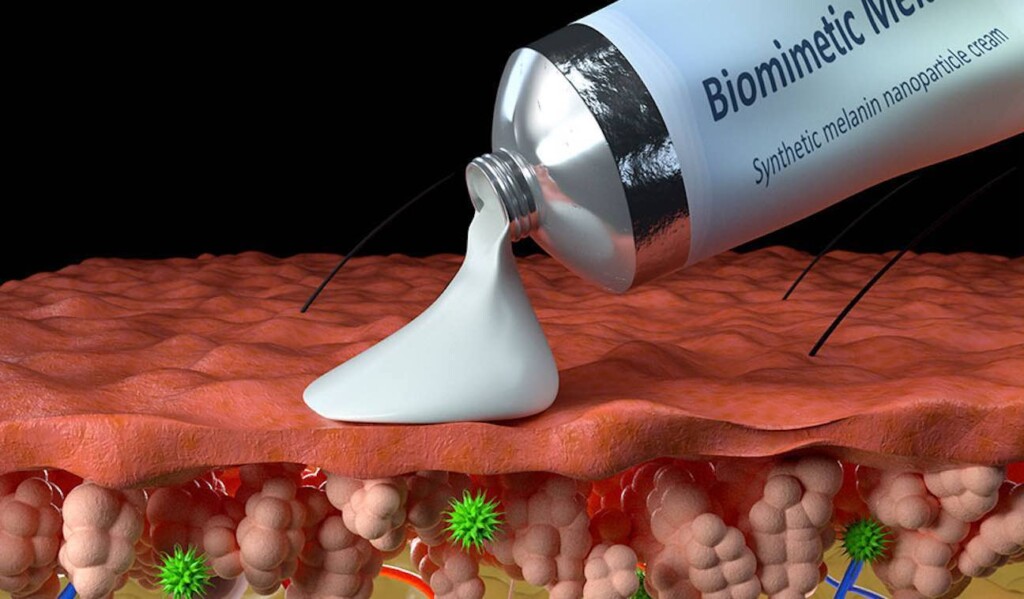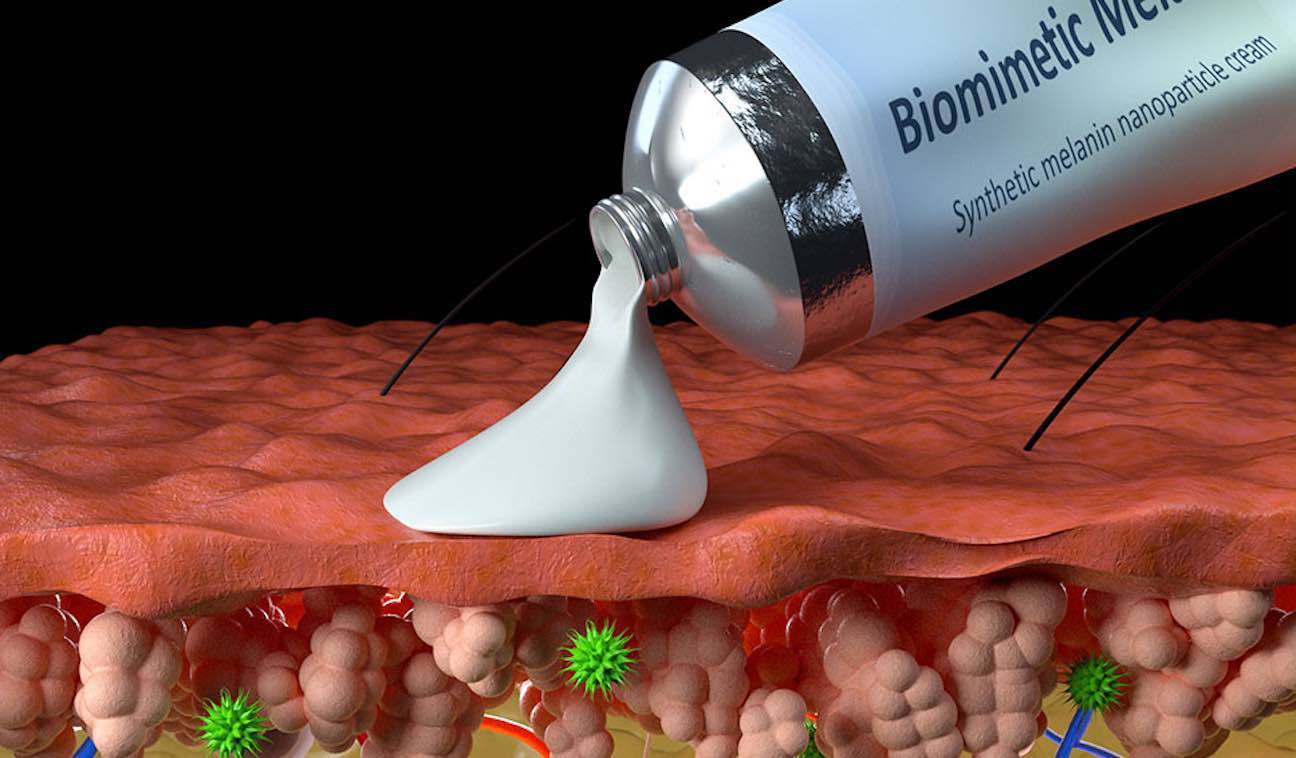
A groundbreaking discovery has been made by scientists at Northwestern University. They have developed a unique skin cream known as ‘super melanin’, which has the remarkable ability to continuously heal sun damage and chemical burns.
This synthetic melanin cream, inspired by the natural melanin found in human skin, has shown excellent results in accelerating wound healing when applied topically to injured skin. It not only heals the skin itself but also has systemic effects throughout the body.
A recent study published in Nature Regenerative Medicine has demonstrated that this cream, when applied, protects the skin from sun exposure and aids in the healing of skin damaged by sunburn or chemical burns. By scavenging free radicals that are produced by injured skin, such as a sunburn, the synthetic melanin effectively prevents cell damage that can lead to skin aging and skin cancer.
Melanin, which provides pigmentation to human and animal skin, eyes, and hair, naturally protects cells from sun damage by increasing pigmentation, much like a tan. It also acts as a scavenger of free radicals in response to harmful environmental pollution caused by sources like industry smokestacks and car exhaust fumes.
Dr. Kurt Lu, a co-corresponding author of the study and a dermatology expert at Northwestern University School of Medicine, explained, “People don’t often realize that their everyday lives, especially sun exposure, can cause long-term damage to their skin. The synthetic melanin cream offers continuous protection against harmful ultraviolet light and actively promotes skin healing.”
The aging of skin due to external factors, such as air pollution, can be significant. “All those insults to the skin lead to free radicals, which cause inflammation and break down collagen. This is one of the reasons why older skin looks different from younger skin,” added Lu.
The scientists at Northwestern University engineered synthetic melanin nanoparticles with a modified structure to enhance their ability to scavenge free radicals. This ‘super melanin’ surpasses human melanin in terms of radical scavenging capacity. It is biocompatible, degradable, non-toxic, and transparent when applied to the skin. Notably, it acts as an efficient sponge, removing harmful factors and protecting the skin.
The Unique Properties of the Melanin Cream
Once applied to the skin, the synthetic melanin remains on the surface and is not absorbed into deeper layers. This stabilizes the skin and initiates a healing pathway in both the outer layers and throughout the body. The melanin cream acts as a sunscreen booster, providing additional protection from harmful ultraviolet rays.
The scientists conducted initial tests on the synthetic melanin as a sunscreen, which proved successful. Intriguingly, they discovered that the cream also has a healing effect on injured skin when applied topically. It repairs and protects the skin simultaneously.
Co-corresponding author Nathan Gianneschi, a professor of chemistry and pharmacology at Northwestern, explained, “Our synthetic melanin has superior radical-scavenging abilities compared to human melanin. It is like super melanin. When rubbed onto the skin, it acts as an efficient sponge, absorbing damaging factors and shielding the skin.”
Promising Findings and Potential Applications
The synthetic melanin cream holds potential for use in treating blisters and open sores while also suppressing the immune system. By calming inflammatory responses on the surface layer of the skin, known as the stratum corneum, the cream enables active healing to take place instead of exacerbating inflammation.
In laboratory experiments, the scientists applied their melanin cream to human skin tissue samples that had been chemically induced to blister. The cream facilitated an immune response, aiding the recovery of radical scavenging enzymes and inhibiting the production of inflammatory proteins. This triggered a cascade of responses, significantly accelerating the healing process and preserving healthy skin layers. In comparison, untreated samples continued to blister.
Furthermore, the research team’s work on melanin, partly funded by the U.S. Department of Defense and the National Institutes of Health, has shown that melanin can protect biologic tissue from toxins, including nerve gas. Melanin’s ability to absorb heavy metals and toxins has been enhanced in the synthetic version developed by the scientists.
In recent human trials, the synthetic melanins were found to be non-irritating to human skin, showing great promise for future treatment options, particularly for cancer patients undergoing radiation therapy.
Watch the Video Below to Witness the Continuous Repair of Skin
The revolutionary properties of this synthetic melanin cream have the potential to revolutionize skin care and provide new treatment methods for various skin conditions. Its ability to heal and protect the skin simultaneously opens up opportunities for innovation and advancements in dermatology.


